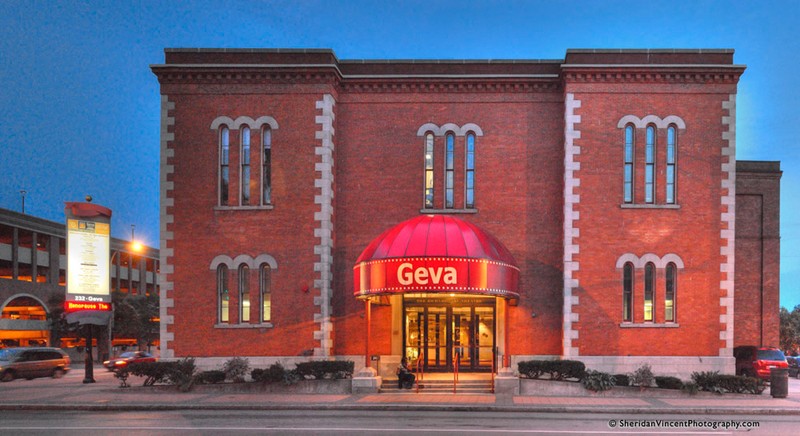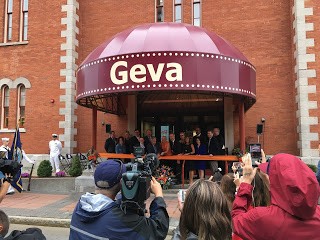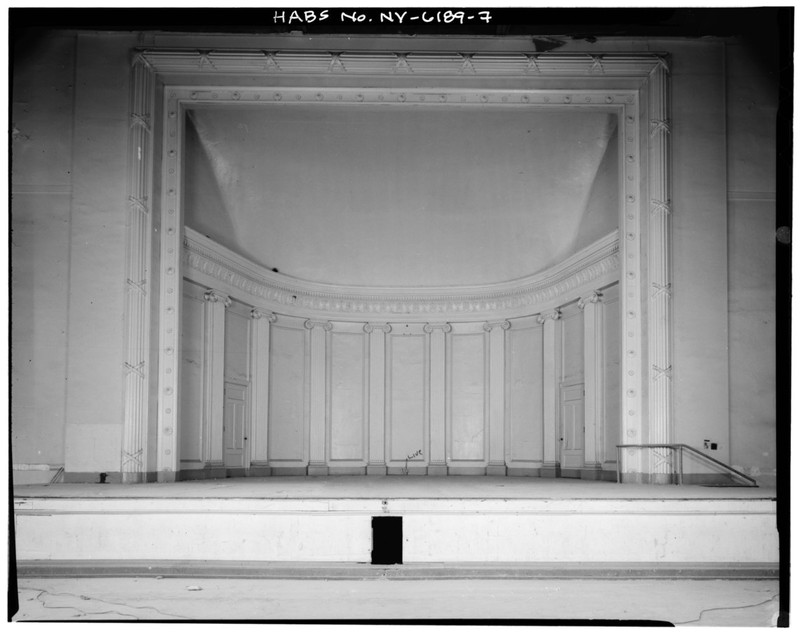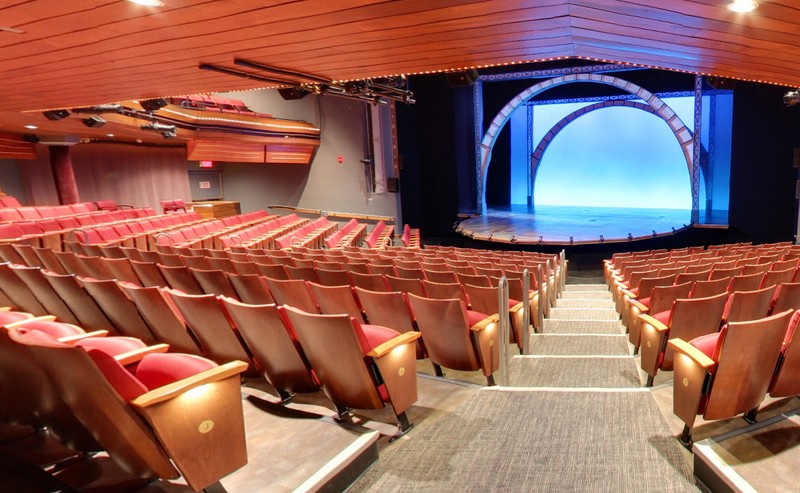Geva Theatre Center
Introduction
Text-to-speech Audio
Images
Front of the Geva Theatre Center building

Re-dedication riboncutting ceremony for the Geva Theatre Center in 2016

Geva Theatre Center main stage (circa 1933)

One of the Geva Theatre Center's stages today

Backstory and Context
Text-to-speech Audio
Built in 1868 by Rochester architect Andrew J. Warner, the Geva Theatre Center was originally occupied by the 54th Regiment of the New York State Militia. The building was originally known as the Naval Armory and used as a drill hall, arms depot, and headquarters for the regiment. In 1907 the City of Rochester commissioned another renowned architect from Rochester, J. Foster Warner, who also designed the George Eastman house, to construct a stage house and lobby in the building. The building reopened that year as the Convention Hall.
From 1907 to 1936, the Convention Hall was used for a plethora of various gatherings and events. These included charity fundraisers, public education forums, union meetings, and community entertainment. Wrestling and boxing matches were weekly occurrences there for many years. Annual dog shows and flower shows were also very popular and well-documented. Washington Square Park’s well-loved annual Dachshund Parade even originated as one of the Convention Hall’s many events.
The original 4,000 seat Convention Hall was also the primary performing arts location in Rochester prior to the construction of the Eastman Theatre. Artists such as Anna Pavlova, Sir Arthur Conan Doyle, Enrico Caruso, Fritz Kreisler, Sergei Rachmaninoff, and Arturo Toscanini have all performed or read their work from the stage there.
During the 1918 Spanish Flu epidemic, the building was converted into a hospital. This was done again in 1930 when entrepreneur and philanthropist George Eastman funded the creation of a tonsil clinic in the lobby. Following the Convention Hall’s closure in 1936, Rochester turned it into the Naval Reserve Building. Then, in 1975, it became the temporary home to several departments of local government.
Among its many different past uses, the building is perhaps most notable for its role in New York politics. Countless political gatherings and two state conventions were held at the Hall. One of these was the 1910 Democratic State Convention- an event which Franklin Delano Roosevelt spoke at and later dubbed his “political initiation." Eighteen years later, he returned to the Convention Hall to accept the Democratic Party’s nomination for governor. He then spoke a third time, eight years later in 1936, as the President of the United States. It was at this same event held at the Convention Hall in 1936 during which Social Security was announced to the public. Other prominent politicians who spoke at the Hall include William Jennings Bryan and Presidents Theodore Roosevelt and William Howard Taft.
In 1982, a 10-year-old theater company called Geva, purchased the building from the city and began remodeling it. After several years, they opened the Geva Theatre Center to the public on November 2, 1985. As of 2018, the Geva Theatre Company has put on over 400 stage productions, and the Geva Theatre Center is recognized as the best-attended theater in New York outside of NYC. Well-known actors who have graced the stage at Geva include Samuel L. Jackson, Kathy Bates, Josh Brolin, and Robert Downey Jr.
Sources
Geva Theatre Center. History, Geva Theatre Center. 2020. Accessed September 29th 2020. https://gevatheatre.org/about-us/history/.
Low, Stuart. Geva Theatre celebrates 40th season, Democrat and Chronicle. September 2nd 2012. Accessed October 2nd 2020. https://www.webcitation.org/6AQo2MYXA?url=http://her.democratandchronicle.com/print/article/20120902/LIVING/309020015/Geva-Theatre-celebrates-40th-season.
NYSCA. Grantee Spotlight: Geva Theatre Center, NY Council on the Arts. November 22nd 2017. Accessed October 2nd 2020. https://arts.ny.gov/blog/grantee-spotlight-geva-theatre-center-0.
http://www.theatrerocs.org/companies/geva-theatre-center/
http://rochreflections.blogspot.com/2016/09/geva-theatre-center-ribboncutting.html
https://www.loc.gov/pictures/item/ny1401.photos.117335p/
https://www.rochesterjazz.com/venues?venue_id=63
